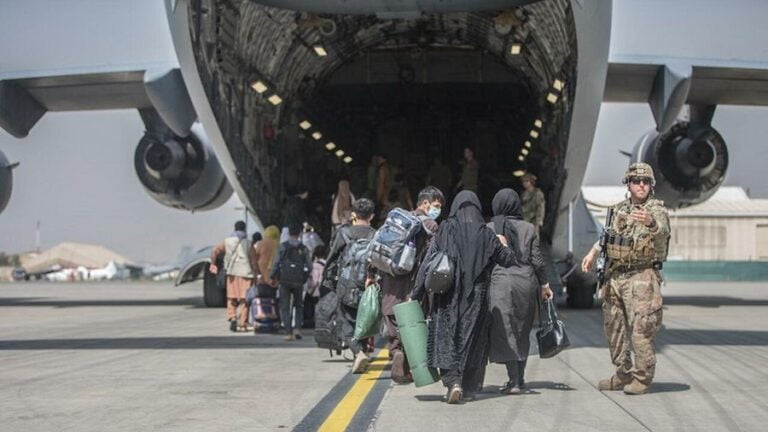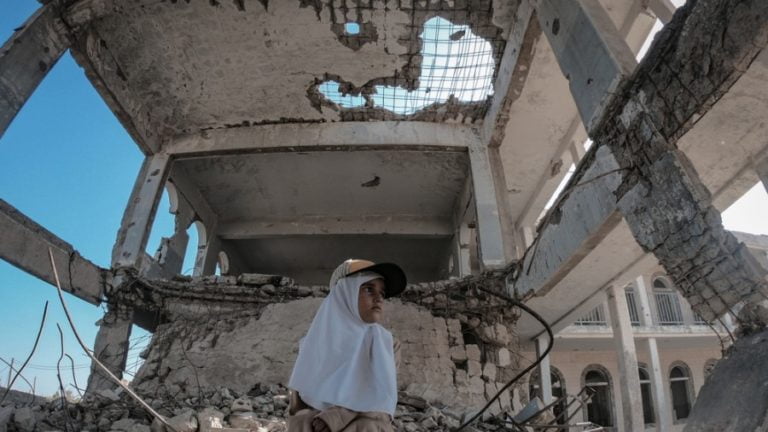Here’s How Poland Is Slyly Taking Control of Western Ukraine
Its political power was cemented last summer after the Rada granted Poles practically the same rights as Ukrainians in accordance with the promise that Zelensky made to Duda in May 2022, while the economic aspect was advanced through mid-July’s opening of the first “Ukraine Reconstruction Service” office in Lvov. That being the case, there isn’t even a need apart from prestige for Poland to formally deploy troops to Ukraine, though that doesn’t mean it won’t happen.
Poland’s “Ukraine Reconstruction Service”
Poland’s Plenipotentiary for Polish-Ukrainian Development Cooperation Jadwiga Emilewicz opened Warsaw’s first “Ukraine Reconstruction Service” (URS) office in Lvov on 17 July in an event that attracted scant international media attention outside of those two countries. Publicly financed Polskie Radio reported on the seminar that she held that day under the auspices of the Warsaw Enterprise Institute here as well as the next day’s one in neighboring Volyn Region’s capital of Lutsk here.
In brief, Emilewicz announced that more offices will soon open elsewhere in Ukraine and that “We are preparing insurance and credit instruments for Polish companies.” She added that “We want to be present on the ground to support Polish entrepreneurs in establishing contacts and to monitor investment needs…We are creating a dialogue platform between Polish and Ukrainian businesses, and involving development institutions, as well as national and local authorities.”
Both seminars were attended by influential figures. The one in Lvov saw the participation of regional governor Maxim Kozitsky, who shared details about the URS’ activities in that region on his Telegram channel here. Meanwhile, the seminar in Lutsk was attended by neighboring Rivne Region’s Military Administration chief Vitaly Koval, who invited Polish companies to invest there right away. It’s important to note that all three regions – Lvov, Volyn, and Rivne – used to be part of interwar Poland.
Two Interconnected Developments
URS’ activities in these parts of Western Ukraine that most Poles still consider to be an inextricable part of their millennium-old civilization are the natural outgrowth of two interconnected developments from May 2022. Polish President Andrzej Duda visited Kiev and spoke at the Rada on the 22nd of that month, during which time he and his Ukrainian counterpart Vladimir Zelensky pledged to accelerate their countries’ comprehensive integration.
The full English-language transcripts of their speeches can be read at each of their respective official presidential websites here and here. In the context of the present analysis, the top takeaway from Duda’s speech was that he shared their plans to streamline more road, rail, and other infrastructure connectivity. Meanwhile, Zelensky said that they’ll create a joint border and customs control. He also declared that Kiev will give Poles practically the same rights in his country as Ukrainians have.
Additionally, Duda’s remarks about how “The Polish-Ukrainian border should unite, not divide” and Zelensky’s about how “there should be no borders or barriers between us” strongly suggested the intent to eventually merge into a de facto confederation as was assessed in this analysis at the time here. The next day on 23 May 2022, Zelensky virtually attended that year’s World Economic Forum (WEF) in Davos and gave a speech that can be read in full in English at his official presidential website here.
Of relevance, he announced that “we offer a special – historically significant – model of reconstruction. When each of the partner countries or partner cities or partner companies will have the opportunity – historical one – to take patronage over a particular region of Ukraine, city, community or industry.” Basically, Kiev plans to pay its overlords back by giving them post-war privileges in their preferred regions, which in Poland’s case are the parts of Western Ukraine that it used to control.
Perfecting The De Facto Confederation’s Economic Plans
These two interconnected developments from May 2022 directly led to Poland opening its first URS office in Lvov 14 months later. Tangible progress was therefore made on their leaders’ thinly disguised plans to merge into a de facto confederation via the “special – historically significant – model” that Zelensky described during his speech at the WEF. Although Kiev granted Poland “patronage” over Western Ukraine at that time, it took till now for Warsaw to launch its associated economic mechanism.
This delay can be explained by the need to carry out topical studies and bring together all stakeholders so that everything can move at an accelerated pace after the first URS office’s opening. Kozitsky’s earlier cited Telegram post touched upon three particular infrastructure projects that advance Duda’s vision of streamlining Polish-Ukrainian connectivity. When paired with the plans to create a shared customs space, this essentially equates to the economic dimension of their de facto confederation.
Poland’s Military Aid & Security Guarantee Demands
The security aspect of these plans is also moving forward. The Polish Finance Minister announced in March of this year that Warsaw gave Ukraine around €6.2 billion worth of military aid in 2022, which made Poland the third-largest state-level financier of the NATO-Russian proxy war there. Reports about Polish mercenaries fighting for Kiev have also circulated since the start of Russia’s special operation, and the “Polish Volunteer Corps” even took credit for a raid into Russia’s Belgorod Region in May.
Poland’s repeated calls for “security guarantees” for Ukraine could serve as the tripwire for it to formally deploy its conventional forces there in the event that such are extended, whether multilaterally via Warsaw’s participation in this scheme or bilaterally with Kiev, even if the latter is reached in secret. Politico’s report last November about Poland’s unprecedented military buildup suggests that it’s planning to have the excess capacity required for a large-scale foreign deployment sometime in the future.
Towards A Conventional Polish Intervention In Ukraine
Of pertinence, its defense spending will be raised to 5% of GDP, it’ll have 300,000 active troops by 2035, and it’s buying billions in modern equipment from the US and South Korea. Poland is a NATO member with Article 5 mutual defense guarantees from the American nuclear superpower, however, so all these steps are excessive if Warsaw only wanted to protect itself from a speculative Russian attack. This observation suggests that Poland is indeed preparing for a conventional military intervention in Ukraine.
Even though it’ll take many more years for it complete its ambitious military plans, being a NATO member means that Poland can in theory deploy abroad whatever is presently available at home without fear of Russia attacking since the US’ nuclear umbrella deters that from happening. The Russian and Belarusian leaderships are taking this scenario very seriously as proven by what their representatives said in late July just several days after Poland opened its first URS office in Lvov on the 17th of that month.
Russia & Belarus Warn About Polish Plans For Ukraine
Russian Foreign Intelligence Service chief Sergey Naryshkin warned about Poland’s military buildup near the Ukrainian border on 21 July during a Security Council meeting whose English-language transcript can be read in full at the official Kremlin website here. “Putin Exposed Poland’s Regional Plans In An Attempt To Deter Them”, but he also said that “If [Kiev] want[s] to relinquish or sell off something (to Poland) in order to pay their bosses, as traitors usually do, that’s their business. We will not interfere.”
His only red line in this respect is for Poland not to attack Belarus since that “would mean launching an aggression against the Russian Federation. We will respond to that with all the resources available to us.” As for that member of the Union State, President Alexander Lukashenko visited St. Petersburg two days later on 23 July, which was less than a week after Poland opened its first URS office. While there, he also rang the alarm about Poland’s plans in remarks that can be read at the official Kremlin website here.
The Belarusian leader felt differently about this scenario than his Russian counterpart did, however, since he described it as “unacceptable” due to the security threat this could potentially pose to the Union State’s southern borders. Their divergent views aside, these statements confirm that the Russian and Belarusian leaderships believe that Poland soon might commence a conventional military intervention in Ukraine to complement its economic control over the western part of that country.
The pretext that Poland might exploit to implement its hegemonic plans could be a Russian breakthrough across the Line of Contact or a false flag attack against Polish projects in Western Ukraine that’s blamed on Belarusian-based Wagner, though other “trigger events” are also possible. There’s even the chance that Kiev could openly invite this intervention during or after seemingly inevitable ceasefire and/or peace talks with Russia as part of a bilateral or multilateral “security guarantee”.
Concluding Thoughts
As it presently stands, Poland has already slyly taken control of Western Ukraine without having to fire a shot. Its political power was cemented last summer after the Rada granted Poles practically the same rights as Ukrainians in accordance with the promise that Zelensky made to Duda in May 2022, while the economic aspect was advanced through mid-July’s opening of the first URA office in Lvov. That being the case, there isn’t even a need apart from prestige for Poland to formally deploy troops to Ukraine.
Nevertheless, it’s precisely for that abovementioned reason that this might still end up happening, both because it could boost the ruling party’s prospects at the polls ahead of this fall’s elections and also since it would show the world that Poland is successfully restoring its long-lost status as a Great Power. That said, Western Ukraine’s formal integration into Poland isn’t a fait accompli even if this happens since it would risk provoking intense furor from nationalist forces on both sides of the border.
With these concerns in mind, which have very serious political and even latent security implications, the scenario of one day formalizing the currently de facto Polish-Ukrainian confederation is much more realistic than Warsaw biting off the western part of that former Soviet Republic. That would accomplish the same strategic goal of expanding Poland’s “sphere of influence” across a portion of its former Commonwealth without risking any major blowback. Truth be told, this scenario might be inevitable.







